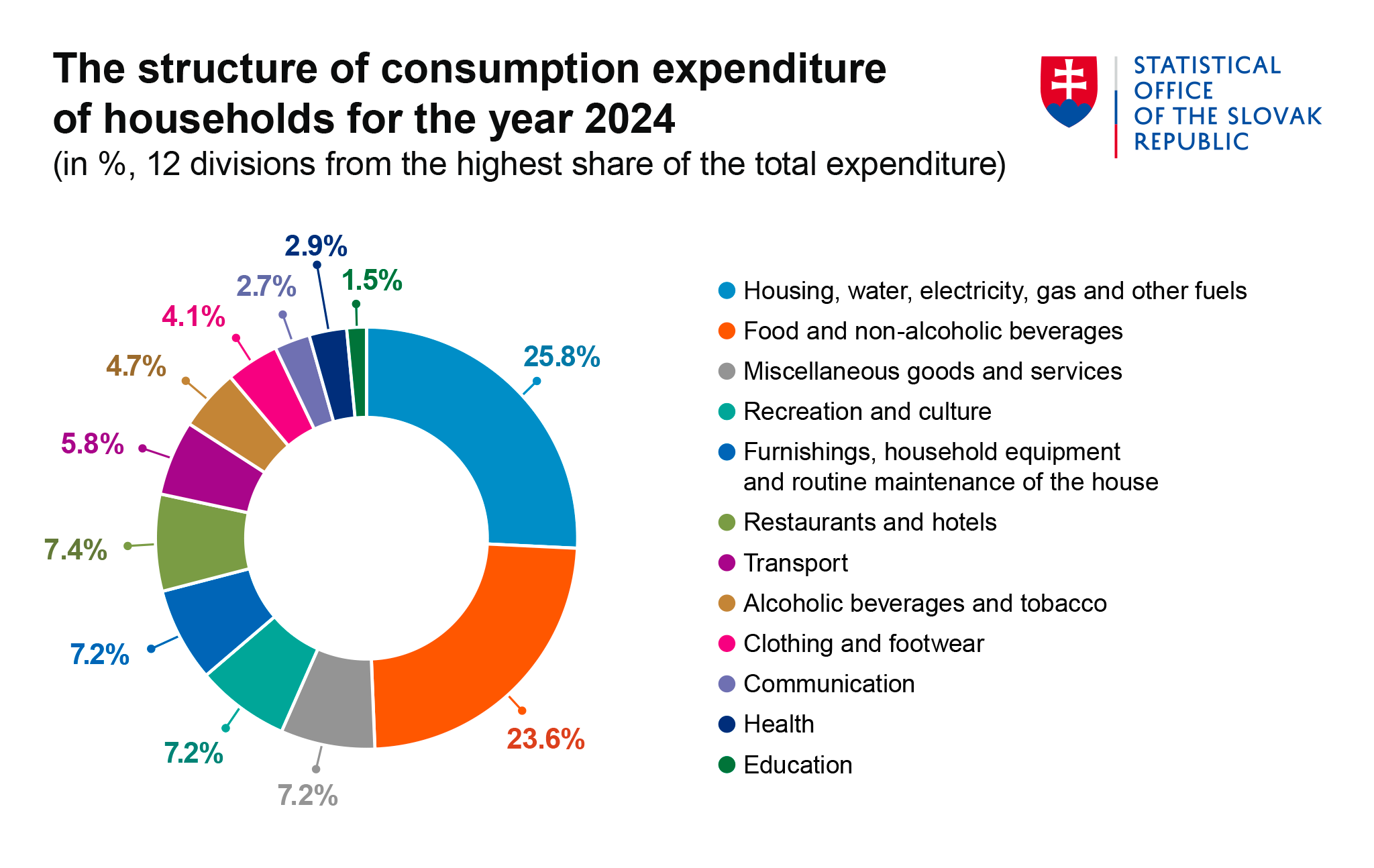Inflation was the lowest in more than two years, reaching 3.4% in February
The trend of the slower price growth continued, and February inflation approached a two-and-a-half-year minimum of 3% year-on-year. The slowdown in growth was particularly manifested in the division of food, but higher prices for alcohol and tobacco prevented a significant slowdown in price increases. The prices of tobacco products, transport services, fuel, as well as goods and services for household maintenance increased month-on-month.
Consumer prices of goods and services rose by 0.5% in February compared to January. Year-on-year inflation reached 3.4%, which is well below the peak from the turn of 2022-2023, when inflation remained above 15% for 4 months.
Download high resolution chart format PDF (73 kB) or PNG (128 kB).
Month-on-month development – February 2024 compared to January 2024
The price increase in February had the greatest impact on the price growth in three divisions of the consumer basket: transportation, alcohol and tobacco, as well as furniture and furnishings.
In transportation, it was mainly fuel prices, which rose by 4.5% month-on-month, and an increase in prices in bus transport. In the field of alcoholic beverages and tobacco, the prices of tobacco products rose sharply, due to the increase in consumption tax, their prices rose by 6.4%. From the group of goods in the field of furniture and furnishings, the growth of February´s inflation was mainly influenced by the higher prices of goods and services for household maintenance.
On the contrary, lower prices of apparel and footwear (by 0.6%), personal care products (by 0.5%) and insurance related to transportation had the most significant dampening effect on month-on-month price growth.
Consumer prices in the two most significant components in household expenditure, in the division of housing with energy and food with non-alcoholic beverages1), rose by only 0.1%. The slowdown of price increases was particularly manifested in the division of food, where the month-on-month growth of fruits and vegetables balanced the decline in the prices of sugar and confectionery, as well as of oils and fats.
Year-on-year development – February 2024 compared to February 2023
In a year-on-year comparison, inflation slowed to a two-and-a-half-year minimum and reached a value of 3.4%. Year-on-year prices were higher in all divisions (household expenditure groups), a double-digit growth remained in education, and currently, due to the increase in consumption tax, the inflation rate has risen to a double-digit value even for alcohol and tobacco.
Prices of food and non-alcoholic beverages continued to have the greatest impact on overall inflation in the year-on-year comparison. The pace of their price increase slowed sharply and for the first time since November 2021 it was more moderate than the overall growth of consumer prices. In February, inflation in the division of food reached an annual value of 3.3%. Year-on-year higher prices were recorded in 7 out of 9 food components, but except of fruit with a double-digit growth, the price growth slowed down in all components. The consumers paid less than a year ago only for milk, cheese and eggs by 3.7% and for oils and fats by 7.5%.
In the division of alcohol and tobacco products, the overall rate of inflation was negatively affected, especially the prices of tobacco, which rose by 12.5%, and spirits, which were more expensive by up to 21.4% year-on-year. In the field of education, it was again mainly fees in kindergartens and primary schools that affected the growth of aggregate inflation.
In total, for the two months of 2024, consumer prices increased by 3.7% year-on-year.
Development of core and net inflation
In January, the total year-on-year inflation rate was 3.4%, core inflation reached 3.7% and net inflation reached 3.9%. On a month-on-month basis, core inflation reached a value of 0.4% and net inflation a value of 0.5%.
Core inflation was affected by price level growth after excluding the impact of changes in regulated prices (e.g. energy prices) and other administrative measures (e.g. tax adjustments, etc.). Net inflation is core inflation without changes in food prices.











 Help
Help